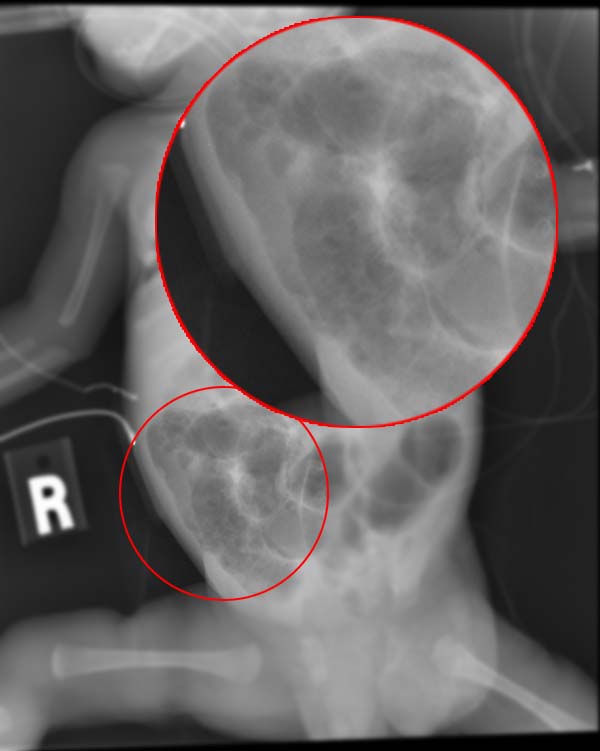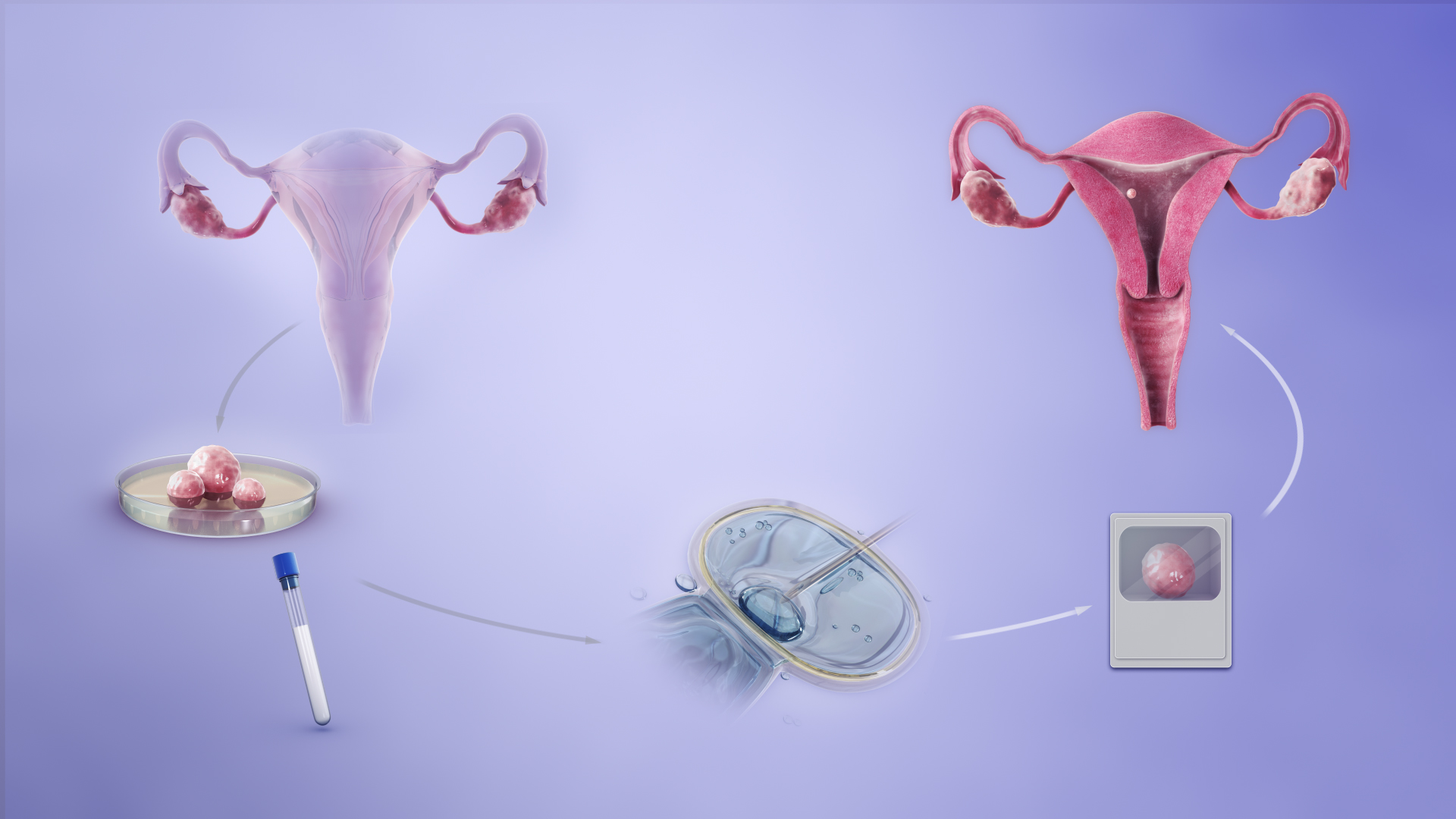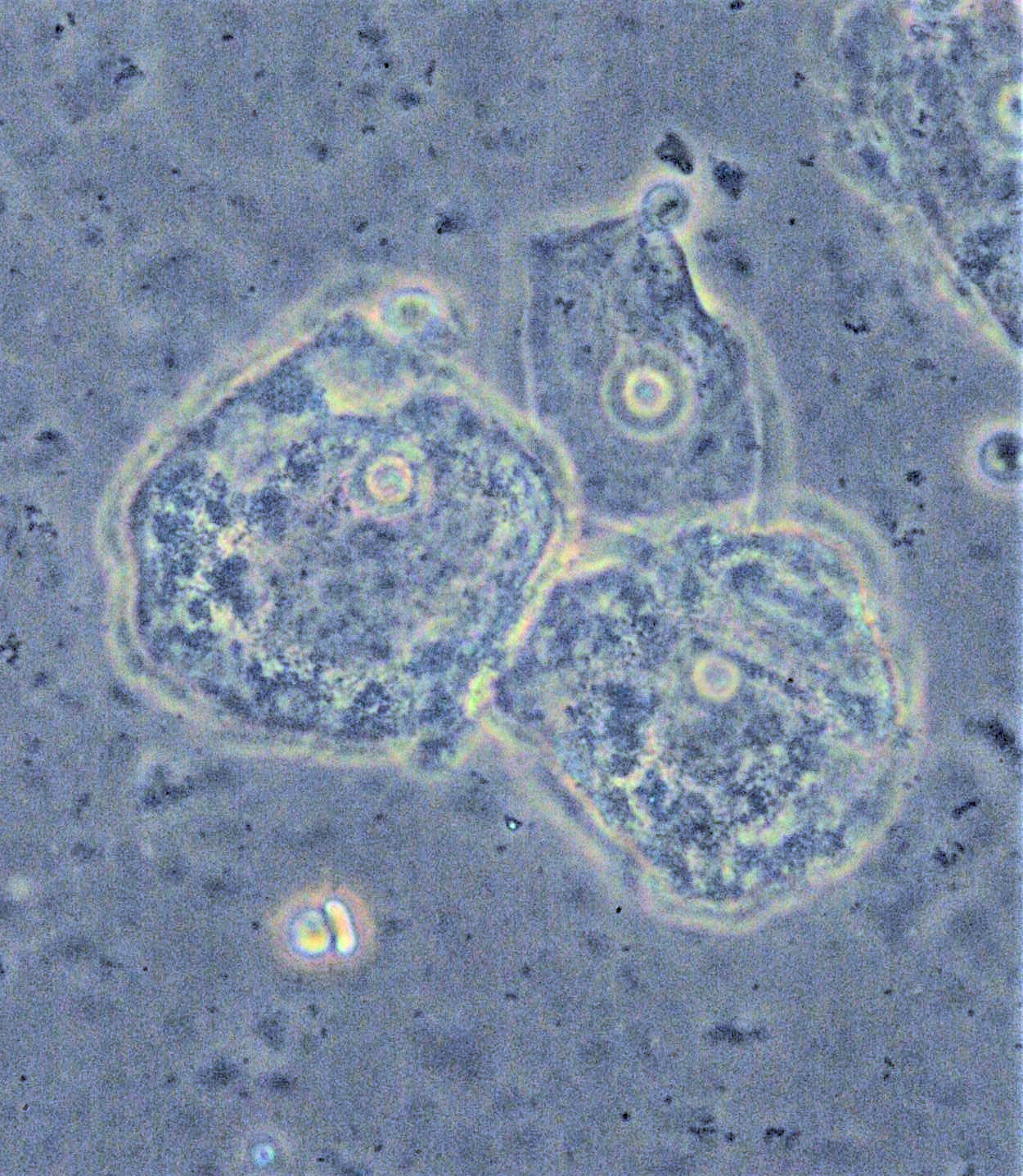|
U. Urealyticum
''Ureaplasma urealyticum'' is a bacterium belonging to the genus ''Ureaplasma'' and the family Mycoplasmataceae in the order Mycoplasmatales. This family consists of the genera ''Mycoplasma'' and ''Ureaplasma''. Its type strain is T960. There are two known biovars of this species; T960 and 27. These strains of bacteria are commonly found as commensals in the urogenital tracts of human beings, but overgrowth can lead to infections that cause the patient discomfort. Unlike most bacteria, ''Ureaplasma urealyticum'' lacks a cell wall making it unique in physiology and medical treatment. Classification The six recognised ''Ureaplasma'' species have a GC content of 27 to 30 percent and a genome size ranging from 0.76 to 1.17 million base pairs, and cholesterol is required for growth. A defining characteristic of the genus is that they perform urea hydrolysis, which creates ammonia as a product. Some strains originally classified as ''U. urealyticum'' should be treated as a new species ... [...More Info...] [...Related Items...] OR: [Wikipedia] [Google] [Baidu] |
Bacterium
Bacteria (; : bacterium) are ubiquitous, mostly free-living organisms often consisting of one biological cell. They constitute a large domain of prokaryotic microorganisms. Typically a few micrometres in length, bacteria were among the first life forms to appear on Earth, and are present in most of its habitats. Bacteria inhabit the air, soil, water, acidic hot springs, radioactive waste, and the deep biosphere of Earth's crust. Bacteria play a vital role in many stages of the nutrient cycle by recycling nutrients and the fixation of nitrogen from the atmosphere. The nutrient cycle includes the decomposition of dead bodies; bacteria are responsible for the putrefaction stage in this process. In the biological communities surrounding hydrothermal vents and cold seeps, extremophile bacteria provide the nutrients needed to sustain life by converting dissolved compounds, such as hydrogen sulphide and methane, to energy. Bacteria also live in mutualistic, commensal and ... [...More Info...] [...Related Items...] OR: [Wikipedia] [Google] [Baidu] |
Cholesterol
Cholesterol is the principal sterol of all higher animals, distributed in body Tissue (biology), tissues, especially the brain and spinal cord, and in Animal fat, animal fats and oils. Cholesterol is biosynthesis, biosynthesized by all animal Cell (biology)#Eukaryotic cells, cells and is an essential structural and cholesterol signaling, signaling component of animal cell membranes. In vertebrates, hepatocyte, hepatic cells typically produce the greatest amounts. In the brain, astrocytes produce cholesterol and transport it to neurons. It is absent among prokaryotes (bacteria and archaea), although there are some exceptions, such as ''Mycoplasma'', which require cholesterol for growth. Cholesterol also serves as a Precursor (chemistry), precursor for the biosynthesis of steroid hormones, bile acid and vitamin D. Elevated levels of cholesterol in the blood, especially when bound to low-density lipoprotein (LDL, often referred to as "bad cholesterol"), may increase the risk of ... [...More Info...] [...Related Items...] OR: [Wikipedia] [Google] [Baidu] |
Antibiotic
An antibiotic is a type of antimicrobial substance active against bacteria. It is the most important type of antibacterial agent for fighting pathogenic bacteria, bacterial infections, and antibiotic medications are widely used in the therapy, treatment and antibiotic prophylaxis, prevention of such infections. They may either bactericide, kill or bacteriostatic agent, inhibit the growth of bacteria. A limited number of antibiotics also possess antiprotozoal activity. Antibiotics are not effective against viruses such as the ones which cause the common cold or influenza. Drugs which inhibit growth of viruses are termed antiviral drugs or antivirals. Antibiotics are also not effective against fungi. Drugs which inhibit growth of fungi are called antifungal drugs. Sometimes, the term ''antibiotic''—literally "opposing life", from the Greek language, Greek roots ἀντι ''anti'', "against" and βίος ''bios'', "life"—is broadly used to refer to any substance used against ... [...More Info...] [...Related Items...] OR: [Wikipedia] [Google] [Baidu] |
Necrotizing Enterocolitis
Necrotizing enterocolitis (NEC) is an intestinal disease that affects premature or very low birth weight infants. Symptoms may include poor feeding, bloating, decreased activity, blood in the stool, vomiting of bile, multi-organ failure, and potentially death. The exact cause is unclear. However, several risk factors have been identified. Consistently described risk factors include formula feeding, intestinal dysbiosis, low birth weight, and prematurity. Other risk factors potentially implicated include congenital heart disease, birth asphyxia, exchange transfusion, and prelabor rupture of membranes. The underlying mechanism is believed to involve a combination of poor blood flow and infection of the intestines. Diagnosis is based on symptoms and confirmed with medical imaging. Maternal factors such as chorioamnionitis, cocaine abuse, intrauterine growth restriction, intrahepatic cholestasis during pregnancy, increased body mass index, lack of prenatal steroids, m ... [...More Info...] [...Related Items...] OR: [Wikipedia] [Google] [Baidu] |
Intraventricular Hemorrhage
Intraventricular hemorrhage (IVH), also known as intraventricular bleeding, is a bleeding into the brain's ventricular system, where the cerebrospinal fluid is produced and circulates through towards the subarachnoid space. It can result from physical trauma or from hemorrhagic stroke. 30% of intraventricular hemorrhage (IVH) are primary, confined to the ventricular system and typically caused by intraventricular trauma, aneurysm, vascular malformations, or tumors, particularly of the choroid plexus. However 70% of IVH are secondary in nature, resulting from an expansion of an existing intraparenchymal or subarachnoid hemorrhage. Intraventricular hemorrhage has been found to occur in 35% of moderate to severe traumatic brain injuries. Thus the hemorrhage usually does not occur without extensive associated damage, and so the outcome is rarely good.Dawodu S. 2007"Traumatic Brain Injury: Definition, Epidemiology, Pathophysiology"Emedicine.com. Retrieved on June 19, 2007.Vinas ... [...More Info...] [...Related Items...] OR: [Wikipedia] [Google] [Baidu] |
Bronchopulmonary Dysplasia
Bronchopulmonary dysplasia (BPD; part of the spectrum of chronic lung disease of infancy) is a chronic lung disease which affects premature infants. Premature (preterm) infants who require treatment with supplemental oxygen or require long-term oxygen are at a higher risk. The alveoli that are present tend to not be mature enough to function normally. It is also more common in infants with low birth weight (LBW) and those who receive prolonged mechanical ventilation to treat respiratory distress syndrome. It results in significant morbidity and mortality. The definition of bronchopulmonary dysplasia has continued to evolve primarily due to changes in the population, such as more survivors at earlier gestational ages, and improved neonatal management including surfactant, antenatal glucocorticoid therapy, and less aggressive mechanical ventilation. Currently the description of bronchopulmonary dysplasia includes the grading of its severity into mild, moderate and severe. This corr ... [...More Info...] [...Related Items...] OR: [Wikipedia] [Google] [Baidu] |
Chorionic Villi
Chorionic villi are Wiktionary:villus, villi that sprout from the chorion to provide maximal contact area with maternal blood. They are an essential element in pregnancy from a histology, histomorphologic perspective, and are, by definition, a products of conception, product of conception. Branches of the umbilical arteries carry embryonic blood to the villi. After circulating through the capillaries of the villi, blood returns to the embryo through the umbilical vein. Thus, villi are part of the border between maternal and fetal blood during pregnancy. Structure Villi can also be classified by their relations: * Floating villi float freely in the intervillous space. They exhibit a bi-layered epithelium consisting of cytotrophoblasts with overlaying syncytium (syncytiotrophoblast). * Anchoring (stem) villi stabilize the mechanical integrity of the placental-maternal interface. Development The chorion undergoes rapid proliferation and forms numerous processes, the chorionic vil ... [...More Info...] [...Related Items...] OR: [Wikipedia] [Google] [Baidu] |
Infertility
In biology, infertility is the inability of a male and female organism to Sexual reproduction, reproduce. It is usually not the natural state of a healthy organism that has reached sexual maturity, so children who have not undergone puberty, which is the body's start of fertility, reproductive capacity, are excluded. It is also a normal state in women after menopause. In humans, ''infertility'' is defined as the inability to become pregnant after at least one year of unprotected and regular sexual intercourse involving a male and female partner. There are many causes of infertility, including some that Assisted reproductive technology, medical intervention can treat. Estimates from 1997 suggest that worldwide about five percent of all heterosexual couples have an unresolved problem with infertility. Many more couples, however, experience involuntary childlessness for at least one year, with estimates ranging from 12% to 28%. Male infertility is responsible for 20–30% of infert ... [...More Info...] [...Related Items...] OR: [Wikipedia] [Google] [Baidu] |
Infection
An infection is the invasion of tissue (biology), tissues by pathogens, their multiplication, and the reaction of host (biology), host tissues to the infectious agent and the toxins they produce. An infectious disease, also known as a transmissible disease or communicable disease, is an Disease#Terminology, illness resulting from an infection. Infections can be caused by a wide range of pathogens, most prominently pathogenic bacteria, bacteria and viruses. Hosts can fight infections using their immune systems. Mammalian hosts react to infections with an Innate immune system, innate response, often involving inflammation, followed by an Adaptive immune system, adaptive response. Treatment for infections depends on the type of pathogen involved. Common medications include: * Antibiotics for bacterial infections. * Antivirals for viral infections. * Antifungals for fungal infections. * Antiprotozoals for protozoan infections. * Antihelminthics for infections caused by parasi ... [...More Info...] [...Related Items...] OR: [Wikipedia] [Google] [Baidu] |
Bacterial Vaginosis
Bacterial vaginosis (BV) is an infection of the vagina caused by excessive growth of bacteria. Common symptoms include increased vaginal discharge that often smells like fish. The discharge is usually white or gray in color. Burning with urination may occur. Itching is uncommon. Occasionally, there may be no symptoms. Having BV approximately doubles the risk of infection by a number of sexually transmitted infections, including HIV/AIDS. It also increases the risk of early delivery among pregnant women. BV is caused by an imbalance of the naturally occurring bacteria in the vagina. There is a change in the most common type of bacteria and a hundred to thousandfold increase in total numbers of bacteria present. Typically, bacteria other than ''Lactobacilli'' become more common. Risk factors include douching, new or multiple sex partners, antibiotics, and using an intrauterine device, among others. However, it is not considered a sexually transmitted infection and, unlike g ... [...More Info...] [...Related Items...] OR: [Wikipedia] [Google] [Baidu] |
Urethritis
Urethritis is the inflammation of the urethra. The most common symptoms include painful or difficult urination and urethral discharge. It is a commonly treatable condition usually caused by infection with bacteria. This bacterial infection is often sexually transmitted, but not in every instance; it can be idiopathic, for example. Some incidence of urethritis can appear asymptomatic as well. Symptoms and signs Symptoms vary based on the cause of the diseases. For infectious causes of urethritis, symptoms may start a few weeks to several months after infection. Non-infectious causes of urethritis commonly show symptoms after a few days. Common symptoms include painful urination, continuous urge to urinate, itching, and urethral discharge. Additional symptoms vary based on sex. Men may experience blood in the urine or semen, itching, tenderness, or swelling of the penis, enlarged lymph nodes in the groin area, and/or pain with intercourse or ejaculation. Women may experience ab ... [...More Info...] [...Related Items...] OR: [Wikipedia] [Google] [Baidu] |
Ureaplasma Parvum
''Ureaplasma parvum'' is a species of ''Ureaplasma'', a genus of bacteria belonging to the family Mycoplasmataceae. ''Ureaplasma parvum'' was formerly known as ''Ureaplasma urealyticum biovar'' 1. ''Ureaplasma parvum'' has been identified as being a commensal in the female reproductive tract as part of the microbiome in healthy women of reproductive age. Classification ''Ureaplasma spp''. are one of the smallest known clonal bacteria. They are closely related to mycoplasmas as they lack a peptidoglycan cell wall, metabolize cholesterol, and require urea for ATP synthesis. The Ureaplasma genus has 14 serotypes that are classified based on the 16S rRNA gene, the urease gene, and the multiple-banded antigen (MBA) gene. ''U. parvum'' has four serotypes (-1, -3, -6, -14) that were differentiated by variations in the MBA gene, a Ureaplasma surface antigen protein. Although ''U. parvum'' is known to be a commensal microorganism within healthy humans, its ability to become pathogenic m ... [...More Info...] [...Related Items...] OR: [Wikipedia] [Google] [Baidu] |







